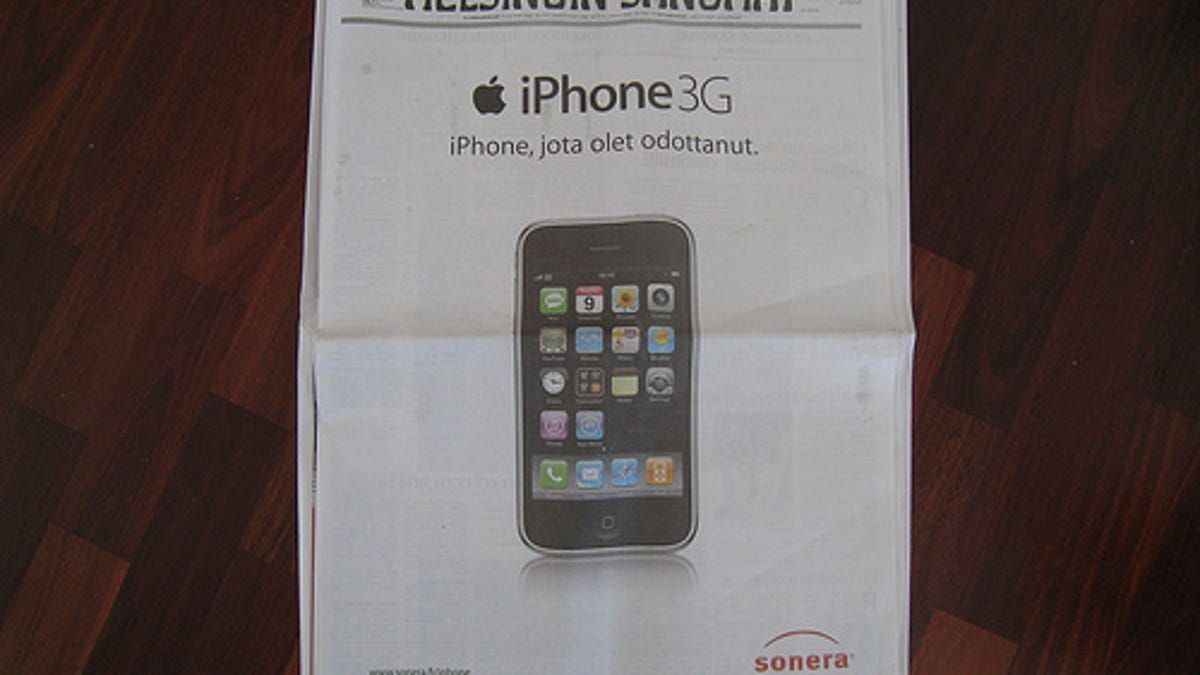Mandate for papers, advertisers: Innovate or die
Has the post-advertising age finally arrived? With a blurring line between commercial and editorial content, publishers are turning into marketing agencies.
Has it finally arrived, the post-advertising age? Advertising Age, nomen est omen, recently ran a story on the blurring line between commercial and editorial content, as media companies are facing a fiercely competitive marketplace amid declining advertising budgets (according to the Newspaper Association of America, advertising revenue in 2008 decreased by 17 percent, to $38 billion), and the looming crisis of the news industry as a whole (see Clay Shirky’s seminal essay on "Newspapers and Thinking the Unthinkable").
As if to further prove the point, the Los Angeles Times carried a Page 1 advertisement on Thursday that craftily confused news and commercial messaging, and consequently sparked a public outcry. Obviously (but not too obviously) labeled as "advertisement" in the top line of the column, the ad for the new NBC cop show "Southland" simulated a mix of news story and critic's review, including a headline ("Southland's Rookie Hero") and the mentioning of a "reporter" following the story. The last paragraph of the story then disclosed the premiere of the TV series.
The NBC ad is not the first prominent commercial message on newspaper front pages. Driven by economic concerns, The New York Times recently sold the first ad in its history on the traditionally "pure" front page of its print edition. And the largest Finnish daily Helsingin Sanomat even sold its entire front page to Apple for an iPhone ad (see picture above). But these ads--however intrusive to the editorial integrity--were still clearly marked as ads.
The LA Times coup is unprecedented: no other major news paper to date has ever run an ad on Page 1 that's tip-toeing on the border to editorial content.
The NBC ad is an example of "fake authenticity," and before you condemn the concept as unethical, ask yourself this: isn't fake authenticity the main ingredient of every compelling story? What if storytelling (branded or not) is the actual domain of news outlets?
In any case, the LA Times' experiment indicates a trend that seems irreversible. The Post-Advertising blog nails the growing sentiment among marketers and media folks: "Just as brands need to be publishers, so publishers need to be marketing agencies that can create opportunities for brands to tell their stories, as well as helping to craft the stories they tell.
At a moment in history when ads are giving ground fast to immersive and informative experiences, publishers need to quit selling space and start selling their ability to help tell and host media experiences." And furthermore: "Traditional media need to transform themselves at least partly into content-based marketing services organizations. They need gradually to quit working with media buying and advertising agencies, which keep relegating them to their traditional roles."
On the flip side, Allan Moore urges advertisers "to change the currency of advertising--from display to something that is more like a service, that enables people. That is more relevant, more contextual, more life-enabling. That is where the money is."
While this sounds like a perfect marriage, advocates of traditional journalism will cry foul over any potential crossover. Yet even they will acknowledge that there are only a few options left on the table for ailing newspapers, as they have no choice but to change their business models:
The first one is the "socialization" of newspapers through funding from community trusts, citizens (Spot.Us), or government subsidies, in order to remain a strong independent press.
The second one is the aggressive advertising route, further propelling a hybridization of editorial and commercial content (with advertorials replacing advertising).
The third and opposite option banks on content and a hypercustomization of articles, ideally monetized through micropayments (see Time's Mine model or the Swiss 20 Minutes micronewspaper for commuters).
A fourth model sees newspapers follow the maxim "If you cannot beat them, share with them." In a much discussed move, the Guardian recently announced its Open Platform initiative, allowing anyone to use Guardian content on its site or Web service.
The publication hopes to make money by requiring partners to carry its advertising as part of its terms and conditions. Instead of trying to charge users for content that can easily be duplicated for free, anyway, the Guardian lets anyone reprint and use its content, and then slaps ads on top of everything. Will it work? It's too soon to tell, but at any rate, it's a bold move.
For Time's Mine, the Guardian's Open Platform, and the LA Times' NBC ad, Albert Einstein's adage rings true: "Anyone who has never made a mistake has never tried anything new." And new it must be for newspapers, if they want to survive.
